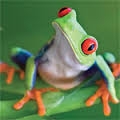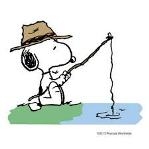Here is a copy of my sleep study report.
POLYSOMNOGRAM REPORT
AHI* = 6.1 NADIR DESATURATION: 85%
*AHI (Apnea/Hypopnea Index) is defined as the number of apnea/hypopnea episodes per hour of
scorable tracing time.
5-14 Mild Sleep Apnea (treatable with symptoms)
15-30 Moderate Sleep Apnea
>30 Severe Sleep Apnea
*NOTE: Patients with an AHI indicating moderate to severe sleep apnea should be advised not
to operate a motor vehicle until treatment is initiated.
DESCRIPTION OF STUDY/DURATION: A 22-channel attended polysomnogram for 405 minutes was
performed, consisting of the following parameters: 6-channel EEG (F3-M2, F4-M1, C3-M2,
C4-M1, O1-M2, O2-M1), 2-channel EOG, submental and tibialis EMG, ECG, SpO2, nasal pressure
transducer, nasal/oral airflow, snoring, respiratory effort with flow volume loop and
digital video recording. Scanning is of excellent quality. Scoring performed according to
AASM Scoring Manual, hypopneas defined per Section VIII, Part 1, D1B.
CLINICAL HISTORY/INDICATION(S) FOR STUDY: Hypoxemia, nonrestorative sleep, daytime EDS
(37-year-old gentleman, nonsmoker, moderately overweight, with asthma, panhyperpituitarism,
depression, and recently diagnosed hypoxemia, on Effexor, Fluoxetine, Levothyroxine, Dulera,
prednisone, and Risperidone). Epworth sleepiness score is 7/24.
PHYSICIAN'S INTERPRETATION/COMMENTS
SLEEP ARCHITECTURE: TST is 216 minutes. Sleep efficiency is 53.3% (poor). Latency to
stage 1 is 1.5 minutes and 33.5 minutes to REM sleep (shortened). Sleep architecture is
moderately abnormal due to multiple prolonged awakenings, increased wake after sleep onset,
and decreased REM percentage. All sleep stages are represented, including 26%, 42%, 23%,
and 9% in stages 1, 2, 3, and REM sleep respectively (low quality sleep).
RESPIRATORY EVENTS/OXIMETRY: There were 21 apneas and one hypopnea for an AHI of 6.1 (REM
AHI of 0). Nadir desaturation was 85%.
SNORING: None observed.
PERIODIC LIMB MOVEMENTS: 20 PLMs but no isolated jerks or associated arousals.
EEG/EOG: 15 arousals and 12 awakenings for an index of 7.5.
EKG: NSR with steady average sleep heart rate of 75 BPM.
SUMMARY OF SLEEP TECHNICIAN'S COMMENTS: Patient slept mostly on his sides with the HOB
flat and 2 pillows. There was little restlessness but no snoring. He did not meet criteria
for a split-night sleep study.
PATIENT'S POST-STUDY REPORT: Patient states he slept shorter than usual with medium depth
and fair quality. He felt more alert in the morning.
TREATMENTS: None.
CONCLUSION/IMPRESSION: Abnormal polysomnogram, diagnostic for mild to moderate obstructive
sleep apnea with AHI of 6.1 (supine AHI of 24), persistent moderate to severe hypoxemia
(nadir desaturation of 85%), and more frequent arousals/sleep fragmentation
(arousal/awakening index of 7.5). PLM index and EKG tracing are WNL. Shortened REM latency
is most likely caused by relative sleep deprivation.
RECOMMENDATIONS: Considering patient's symptoms and above data, in particular severely
significantly REM AHI and episodes of moderate to severe hypoxemia, nasal CPAP is indicated
(preferably Flex/EPR device for possible better compliance) starting on 6-8 cmH2O with 10-20
minute ramp and inline heated humidification, as well as CPAP titration study at a later
date, along with:
1. Good sleep hygiene and sleeping on sides with 20-30 degree upper body elevation if
possible.
2. Avoiding evening caffeine and alcohol (if any) as well as reducing evening fluid intake
if nocturia is an issue at home.
3. Regular exercise (daytime or early evenings) and weight loss around 10-15% to be
encouraged.
4. ENT screening/evaluation to rule out correctable upper airway obstructing lesions if
snoring persists despite above measures.
5. Other causes of daytime sleepiness (sleep hygiene issues, circadian sleep disorder,
medical diseases such as anemia, chronic organ failure, metabolic/endocrine disorders, etc.,
narcolepsy, idiopathic hypersomnia, partially controlled anxiety, mental depression, RLS) to
be considered if there is suboptimal response to CPAP (after CPAP titration).
6. Caution with driving, in particular long distances, until sleepiness is in good control.
7. Follow-up with Dr. Petit or Miriam Kanteh within 3 months of CPAP use.
NOTE: Alternate treatment options are oral appliances fitted by a dentist and ENT surgical
procedures if use of nasal CPAP is really undesirable to the patient.
Sleep study report
- shadowfx78
- Posts: 47
- Joined: Mon Oct 26, 2015 2:12 pm
- Location: Massachusetts
Sleep study report
_________________
| Machine: ResMed AirSense™ 10 AutoSet™ CPAP Machine with HumidAir™ Heated Humidifier |
| Mask: AirFit™ N10 Nasal CPAP Mask with Headgear |
| Additional Comments: ClimateAirLine Heated Hose |
Last edited by shadowfx78 on Tue Oct 27, 2015 6:03 pm, edited 1 time in total.
- Wulfman...
- Posts: 6688
- Joined: Mon Sep 01, 2014 6:41 pm
- Location: Nearest fishing spot
Re: Sleep study report
I would suggest editing your post and removing all of the names (especially your own) and other identifying numbers from it.
In my opinion, the sleep study data is only a glimpse of only one night. The on-going data from your machine when used over longer periods is much more valuable to chart your therapy and its success.
Den
.
In my opinion, the sleep study data is only a glimpse of only one night. The on-going data from your machine when used over longer periods is much more valuable to chart your therapy and its success.
Den
.
(5) REMstar Autos w/C-Flex & (6) REMstar Pro 2 CPAPs w/C-Flex - Pressure Setting = 14 cm.
"Passover" Humidification - ResMed Ultra Mirage FF - Encore Pro w/Card Reader & MyEncore software - Chiroflow pillow
User since 05/14/05
"Passover" Humidification - ResMed Ultra Mirage FF - Encore Pro w/Card Reader & MyEncore software - Chiroflow pillow
User since 05/14/05









